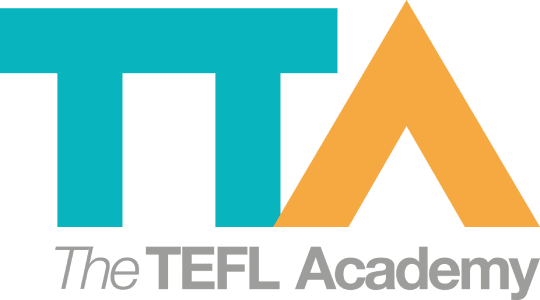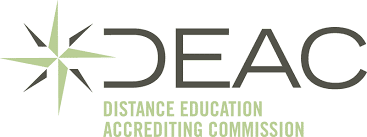Inside The Eikaiwa: Revealing The Unfiltered Truth
Join a global community of over 200,000 TEFL teachers working throughout the world! Enrol me!
Becoming an English teacher (a TEFL teacher, to be specific) is one way to make the dream of working and living in Japan a reality. If you’ve done any research, you’ll know that there are two main options for teaching in Japan: working as an Assistant Language Teacher (ALT) or teaching in an eikaiwa.
In this post we’re going to look at teaching in eikaiwas, and what it’s really like. Plus, to help us out in our quest for the truth, we’ve roped in the help of Robyn Kinghorn, a TTA alumni who taught at NOVA, one of the top eikaiwas in Japan.

As a 23-year-old Scottish business graduate from Edinburgh University, I found myself drawn to adventure rather than corporate life. My journey into TEFL began unexpectedly, sparked by a language tutor from my German minor who shared teaching opportunities that planted seeds of possibility.
After meticulously researching my options, Japan’s eikaiwas (English conversation schools) emerged as the perfect blend of cultural immersion and career stepping stone.
The prospect of teaching English in small, personalised settings rather than traditional classrooms appealed to my personality, while Japan’s reputation for safety, rich culture, and competitive teaching packages made the decision clear.
What followed was a year at NOVA filled with memorable contrasts—classroom cubicles, enthusiastic adult learners, crying five-year-olds, and street corners where I’d hand out branded tissues as an unofficial cultural ambassador!
What are eikaiwa schools?
Eikaiwa schools are, essentially, private conversation schools. As an ALT, you’re placed in a public junior or high school. Teaching at an eikaiwa is like working in a private language academy.
Robyn:
Initially, I found it confusing to navigate the different types of schools in Japan and their varying work environments. I needed to decide between:
1) a traditional classroom role teaching groups of children (usually with a Japanese assistant) in actual Japanese primary and high schools, or
2) working at a business offering English lessons to people of ALL ages (from 5 to 90+) in both one-to-one settings and small groups.
For me, this second option sounded a LOT less intimidating and more comforting for my first year in this profession.
The major franchises that consistently recruit teachers are Nova, Gaba, AEON, ECC, and Berlitz.
What does the typical work schedule look like?
Eikaiwa schools are open 7 days a week. Robyn’s days off were Tuesday and Wednesday. During the week, she worked from 1 PM to 9 PM, while weekends were 9 AM to 5 PM.
Monday morning, I’d wake up on my futon mattress in my minimalist but decent studio flat in Okayama City—one main room with a balcony, a separate kitchen, and a bathroom.
Back then, mornings weren’t my thing, so I’d get up late (between 10-11am!), make porridge, shower, put on black and white office attire, pack my lunch and snack, then walk 15 mins to the NOVA office.
I’d arrive 15 minutes before my first lesson and settle into the open-plan lobby where teachers’ desks sat behind reception. This set-up encouraged student interaction while also keeping us under the receptionists’ watchful eye.
I’d check my schedule—eight 40-minute slots, with lunch and snack breaks. Some slots stayed empty, but students could book or extend lessons last-minute.
Technically, it was the receptionists’ job to fill our schedules (as they doubled as salespeople), but they referred teachers who encouraged bookings and got annoyed if you didn’t help fill your own slots.
The unspoken rules around empty lesson slots are something that could put you off NOVA, or not.
Students choose their teachers. If you were a poor instructor or came across as rude, you wouldn’t get picked! Popular teachers tended to have fully booked schedules.

*Ding dong*—the NOVA bell rang at 1 PM. I’d head to my cubicle, greet my students, then dive into the lesson.
*Ding dong*—40 minutes later, class was over! I’d hurry to the lobby for a frantic 10-minute turnover, check my next student, choose a lesson, and ideally log feedback from the previous session.
*Ding dong*—off to the next lesson!
A short snack break after the first few lessons, then three more before lunch. I have my packed lunch in the break room and squeeze in a small nap— I’m an expert at speed-napping!
Then, I have an unbooked lesson so I head to the underground walkway with a bag of NOVA tissues. A Japanese couple encourage their 8-year-old to say hello. I smile, hand them a pack, and move on.
40 minutes later, just two lessons to go! Thankfully, both are one-on-one with competent students who are regulars.
*Ding dong*—9 PM, shift over!
Unless I had feedback to catch up on, I was free to go. Tonight, like most nights, I’m too tired to go out for dinner or drinks, so I stop at a mozzarella stick street food stall—dipped in castor sugar, it’s one of many quirky foods I love here.
The teaching style and curriculum
Lesson planning was quick and easy—max 10 minutes. NOVA follows a set curriculum with structured textbooks, so I just chose the lesson and delivered it. Once I got the hang of it, teaching became stress-free (for the most part).
The 15 minutes before class were spent chatting with the 3-4 other teachers since lesson planning was minimal. I’d check the class level—say, Level 7—grab the corresponding seasonal textbook, and pick a lesson the student hadn’t done yet. The structure was drilled into us during training, so prep became second nature.
The classroom culture was surprisingly relaxed—you had control over how you conducted the lesson, as long as you followed the textbook pages exactly as trained (very important!).
Each session was 40 minutes, with one to five students seated at a table. The students ranged from high school graduates to retirees, and lessons varied from simple phrases like, “What do you like?” to advanced topics like conditionals. Some days were smooth and enjoyable; other times, you’d be dragging the conversation making 40 minutes feel like an eternity.
Students paying extra for private lessons could skip the textbooks and focus on conversation. These sessions barely felt like work since we just chatted about their week, travel plans, or hobbies. Happy days!
Salaries and benefits of teaching in eikaiwas
Of course, an important question is: What salary can an English teacher in Japan expect?
Bear in mind, different eikaiwas pay different rates, which pay differently to the JET program.
I was really happy with what I earned—especially as a recent graduate. It matched the cost of living in Okayama, and I managed to save quite a lot.
At Nova, you earn a base hourly wage, but your actual pay depends on the lessons you teach. Group lessons pay the least, while private one-on-one sessions, kids’ lessons and specialised classes like grammar or test prep pay more.
Unbooked slots mean helping with reception admin, tidying/cleaning, or famously handing out branded tissues outside. I didn’t mind too much. It was just like handing out leaflets, but with the added twist of being a ‘gajin’! (the Japanese word for foreigner). Many people enjoy saying hello and engaging in small talk to practise their English.
Let’s look at what Robyn earned in more detail:
Pay: ¥320,000/ $2200 a month (on average)
Studio apartment: ¥53,000/$370 a month(deducted from my salary)
Groceries: ¥26,000/$180 a month (on average)
Money to burn/save: ¥240,000/$1650 a month
Despite the pay structure, I earned more than enough. I took my mom and sister on an incredible trip to Japan’s hotspots, covering everything—hotels, bullet train tickets, Universal Studios, and more. Looking back, I realise how amazing that was. I haven’t been able to support a trip like that since!
One great thing about the salary was that your bills/utilities were already deducted, so whatever remained was spending money. Plus, Nova offers several financial perks:
- flight reimbursement upon sign-up,
- a Christmas bonus, and
- a bonus equal to one month’s salary if you complete your one-year contract.
Overall, I felt financially comfortable. My salary allowed me to travel, save, and enjoy Japan without financial stress.
Whether exploring coastal islands or taking spontaneous trips to nearby cities, I had the flexibility to embrace the experience without worrying about my bank balance.

What to expect working in eikaiwas
There are a lot of perks, but, to be fair, the eikaiwa schedule isn’t great. Shifts running from 1 PM to 9 PM on weekdays and 10 AM to 6 PM on weekends meant my free time never quite aligned with a “normal” social life.
Add short, rushed breaks and some days felt like a non-stop conveyor belt of students with only 10-minute gaps between lessons to breathe, plan, and submit feedback.
Another challenge was the strict work culture. Receptionists handled bookings and admin but also acted as the school’s eyes and ears. If you unknowingly bent a rule, you could find yourself reported to the manager. The micromanagement wasn’t always unbearable, but it could be frustrating.
Life at an eikaiwa came with some truly odd moments, but the quirks made it memorable. The unpredictability kept things interesting.
One day I’d be teaching a high-level business professional how to navigate small talk with foreign clients, and the next, I’d be helping a 70-year-old retiree order coffee in English.
What sort of students you’ll be teaching
One of the best aspects of teaching at NOVA was the students.
Unlike teaching in regular schools, eikaiwa students pay for lessons, so they’re motivated to be there. Most were genuinely keen to improve and many were excited to chat with a foreign teacher.
My best classes were one-on-one lessons with Advanced students where I essentially got paid to have interesting conversations
Challenges and downsides of working in eikaiwas
Outside of the classroom, Japan was everything I had hoped for – safe, clean, and brimming with incredible food, culture, and natural beauty. The people were kind and I never felt out of place or unwelcome despite the cultural differences.
My working hours left me exhausted during the week, so my social life was limited to weekends. And even then, with a 9 AM start on Saturdays, late nights weren’t an option.
Looking back, I could’ve made more of my time, but I just didn’t have the energy for big nights out. Major cities like Tokyo or Osaka always have something happening, but Okayama was quieter, with fewer trendy spots—bars and restaurants, yes, but no buzzing nightlife or rooftop venues.
A downside at work was the micromanagement. The receptionists were lovely – unless you got on the wrong side of them! They’d help with Japanese life admin but wouldn’t hesitate to scold you or even snitch on you to the manager-teacher for minor mistakes!

How to get hired at an eikaiwa & requirements
I applied to NOVA and AEON (widely regarded as solid entry-level positions for TEFL teachers with locations throughout Japan), along with several independent eikaiwas in desirable locations.
After submitting my CV, cover letter, and detailed questions about teaching methods and lesson planning for the larger companies, I received five video interview invitations. The application process is definitely manageable.
The video interviews were similar with varying degrees of formality. They all began with standard introductions: asking about myself, my motivation for teaching, and specifically why I was interested in Japan—this last point is crucial!
Several interviews required me to teach a basic grammar point, explain vocabulary in an engaging way, or demonstrate how I’d tactfully correct student errors. Thanks to my TEFL training, these tasks felt manageable rather than intimidating.
Some interviewers even had me pretend they were complete Beginners, asking me to introduce myself and elicit a response from them.
From those interviews, I was offered jobs at NOVA and a couple of other schools, which was exciting! NOVA made all the visa, documentation, and accommodation processes super straightforward, so I headed to Japan in April 2019 for my initial one-year contract.
And that was just the beginning! If Robyn’s story resonates with you, then it’s time for you to get TEFL-qualified so you can start your own TEFL journey!
Accreditation & Quality Assurance
The TEFL Academy was the world’s first TEFL course provider to receive official recognition from government regulated awarding bodies in both the USA and UK. This means when you graduate you’ll hold a globally recognised Level 3 (120hr) Certificate or Level 5 (168hr) Diploma, meaning you can find work anywhere and apply for jobs immediately.
 United Kingdom
UK
United Kingdom
UK












